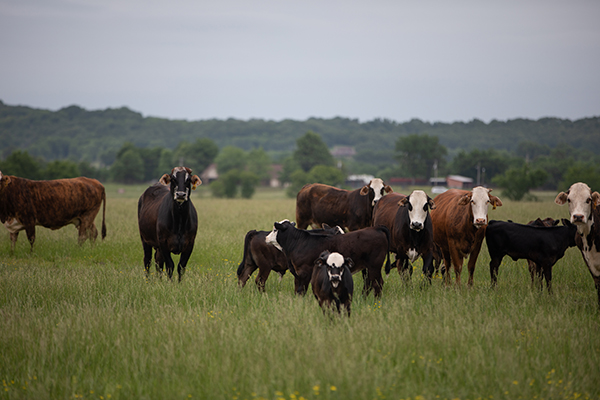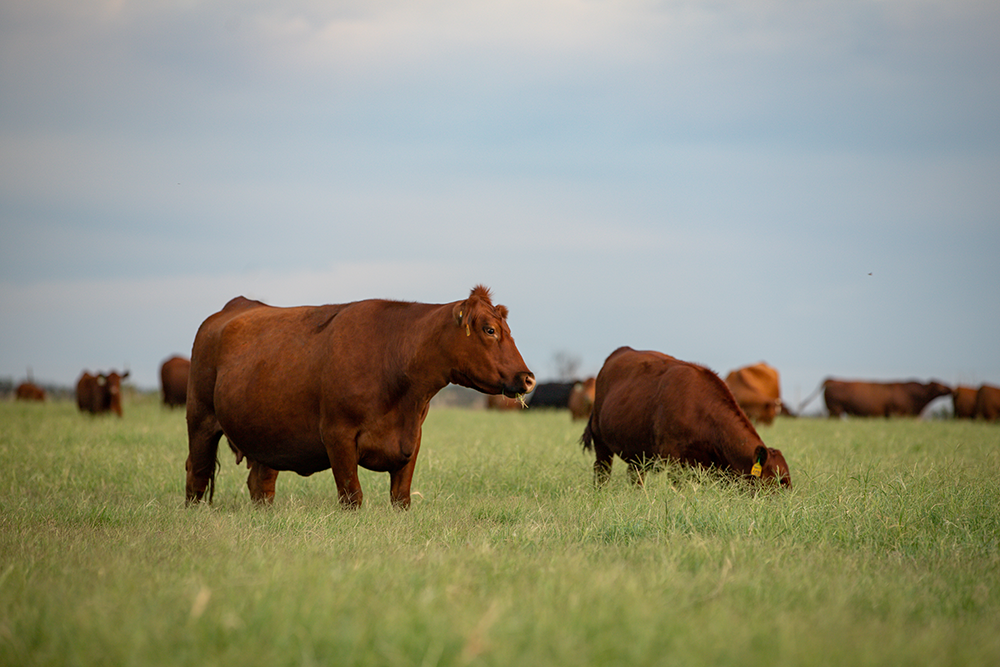
Beef heifer mastitis is a potentially devastating issue for cattle herds, as it can quickly spread and have a significant impact on both animal health and your bottom line. Mastitis, characterized by the inflammation and infection of one or more teats, often leads to the development of blind quarters. This condition, while often overlooked, can destroy the milk-producing tissues within the affected teats, ultimately resulting in decreased milk production and reduced weaning weights.
One of the key contributors to mastitis in beef heifers is the presence of horn flies. These persistent insects are known to feed on the blood vessels in the skin of the teats, causing irritation and creating a gateway for mastitis-causing bacteria. Horn flies can carry these harmful bacteria from one animal to another, entering the teat orifice and moving upward within the quarter, where they inflict damage on the milk-producing tissues. With horn flies feeding on cattle and taking up to 40 blood meals a day, the potential for the rapid spread of mastitis within a herd becomes evident. These flies only leave the animals to lay their eggs in fresh manure, perpetuating the cycle of infection and infestation.
The Importance of Fly Control
According to Dr. Nickerson at University of Georgia, 75% of all heifers have mastitis before they calve. He attributes 50% of that mastitis to the horn fly. By implementing an effective fly control program and incorporating Altosid® IGR to help prevent cases of mastitis, you can improve the overall health of the herd, particularly among the heifers.
Michael Hampton emphasizes the increased value of heifers in recent years, making it imperative for producers to protect their investment. “We know that heifers are going to be more valuable than they've been in quite a few years,” he says. “It's really imperative that producers do everything they can to protect that investment and buy it.”
The Role of Altosid® IGR
From a fly control standpoint, using Altosid® IGR (Insect Growth Regulator) can be a game-changer. Mark Upton explains that Altosid® IGR is incorporated into the feed and works by treating the manure where horn flies reproduce. The product passes through the animal's digestive system and into the manure, preventing horn fly eggs from hatching. This breaks the life cycle of the horn fly and significantly reduces their population. “By using Altosid® in their mineral or tubs, then what we do is we don't treat the animal, we're treating the manure where those flies are reproducing and we're breaking that life cycle,” says Hampton.
Using Altosid® IGR is a cost-effective and labor-efficient method. It eliminates the need to pen the cows and reduces stress on both the animals and the work crew. “It doesn't require much labor other than putting out that product,” Hampton adds. “You don't have to pin the cows. You're not stressing those heifers. You're not stressing your work crew. So, it really makes a lot of sense to base a fly control program over feeding Altosid®.”
Additionally, it only costs about two and a half cents per head per day for a 750 to 800-pound heifer, making it an affordable solution for increasing weight gain, reducing mastitis, and improving overall herd health. Upton elaborates, “We're going to increase weight gain, that means that heifer is going to breed sooner. We're going to get her out there producing a calf sooner. And also, we're going to prevent mastitis.”
Producers are increasingly aware that their animals are going to be worth more in the coming years. Therefore, they are looking for programs and products that make their animals healthier and more productive. “Producers know that their animals are going to be worth more this year and next year, more than likely,” says Upton. “They're going to be looking for programs and products to use to make those animals healthier, make them more productive. Nothing could do a better job for them than Altosid® in their feeding program.”
Incorporating Altosid® IGR into their feeding program is one of the best ways to achieve these goals. By preventing mastitis and improving the health of the herd, producers can ensure their heifers are at their top level of milk production and overall well-being.
Learn more about protecting heifers from horn flies at the video below!


